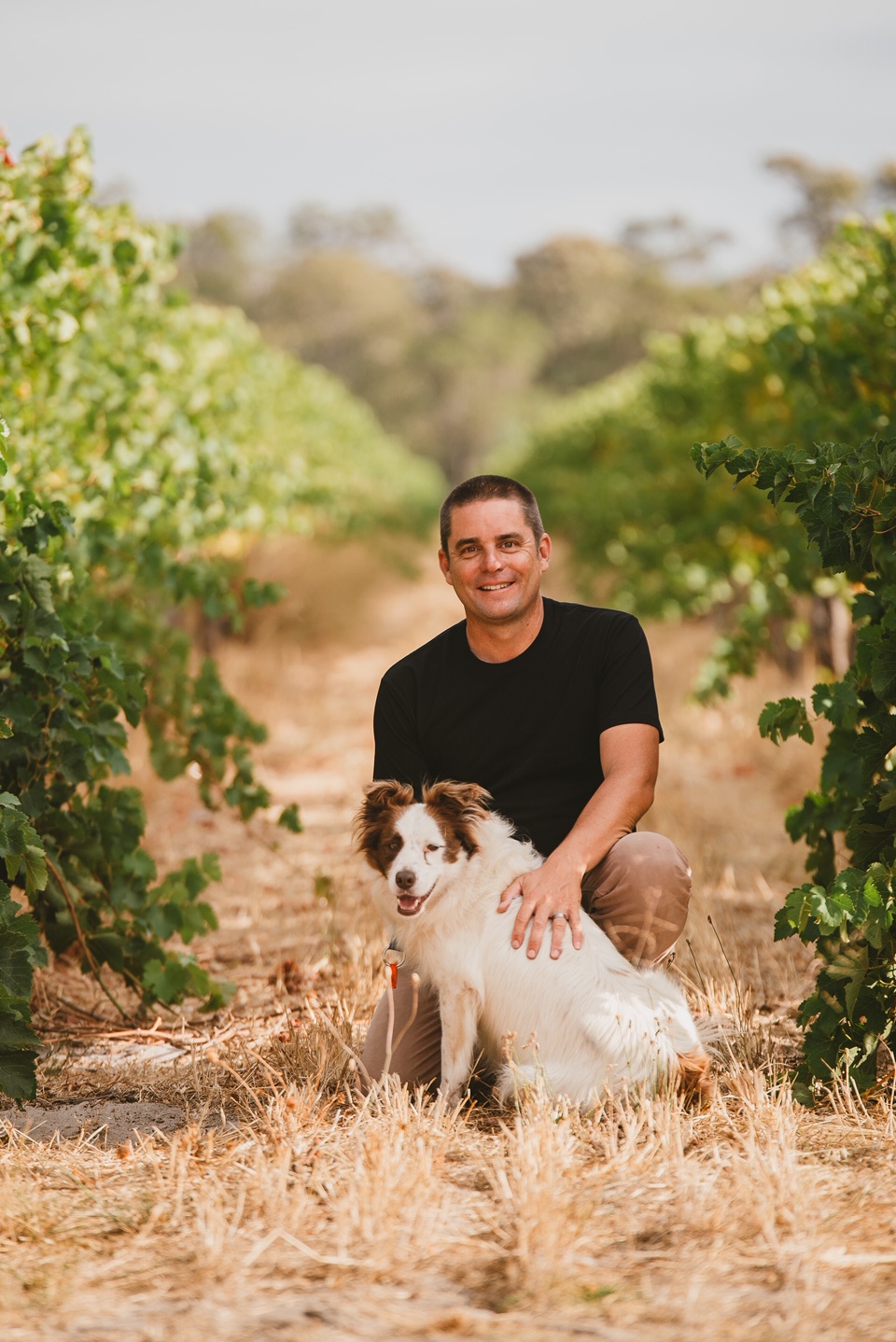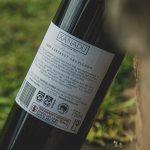By Sonya Logan
When browsing the varieties in the nursery at the Western Australian Vine Improvement Association (WAVIA) shortly after acquiring their second Margaret River vineyard in 2015, Ben and Naomi Gould came across a name that reminded them of an overseas holiday they enjoyed several years earlier that took in both the vineyards and surf breaks of Europe.
“A lot of the stuff we do has been inspired by our travels,” admits Ben Gould.
The couple acquired their first vineyard in 2005. Located in Wilyabrup, the grapes from that 4ha property were initially sold to other wineries before Ben and Naomi, inspired by their tours through the vineyards and wineries of the Old World, decided to keep the grapes and start their own label, Blind Corner. Ten years later they bought a second vineyard some 10 kilometres north as the crow flies at Quindalup. The 20ha property was primarily planted to Cabernet Sauvignon, Shiraz, Chardonnay, Semillon and Sauvignon Blanc but the Goulds were keen to exploit the extra acreage to “do some grafting and grow some varieties that we really wanted to have a crack at,” as Ben puts it.
“When we were in Burgundy, we remembered sitting at wine bars where the first wine you’d drink would always be a sparkling and it’d often be an Aligoté. And then we learned of people making standalone Aligotés in the region and realised a lot of the Chardonnay-based wines made there had a percentage of Aligoté in them.”
It was Aligoté’s blending potential with Chardonnay that largely motivated the Goulds to graft over two rows of Chardonnay to the variety in 2016. Just the one clone was in the WAVIA nursery — G9V1 HT60. The plan, explains Ben, was to use the fruit from those 400-odd Aligoté vines to naturally enhance the acid in a blend with Chardonnay that they were keen to pick earlier. Having achieved organic and biodynamic certification of their vineyards, the Goulds also desire to reduce or eliminate their use of additives in the winery.
“We weren’t wanting to correct the acid in the Chardonnay; we wanted the Chardonnay itself to be riper when we picked it. By grafting in Aligoté and blending it with the Chardonnay we were using it as a natural acid enhancer, because Aligoté holds acid really well. So, we could pick the Chardonnay slightly riper than usual…and then use the Aligoté portion to bump the acid up to balance the wine.”
In a couple of years, the Goulds have released a standalone Aligoté under their Blind Corner label, but Ben admits that with only 400 vines to play with, the ability to experiment with it has been limited.
“The couple of standalones we did we were pretty happy with but we just didn’t think they were ever going to hit the heights that we’d hoped for. Its value is so much higher in our Chardonnay — we think it makes a much better wine,” he comments, but adds that nonetheless Aligoté could make a good varietal, but perhaps not using the clone in their vineyard.
“We think we’ve got the green clone — it’s got greener flavours, bigger bunches.”
While not confident they have the most ideal clone for producing a varietal Aligoté, the small number of vines at Ben’s disposal to experiment with has also limited his options.
“In some years we don’t even have enough for a full barrel. And when you’re dealing with such a small quantity it’s very hard to go, okay let’s try this on this barrel and let’s do full solids over there and put it on skins here — there’s just not enough to do it.”
Ben admits that by virtue of being grafted onto Chardonnay, the behaviour of the Aligoté is unlikely to be enitrely true to the variety, but he reports that it is somewhat Chardonnay-like.
“With a graft, it always takes a little bit of time for the vines to return to full strength because you’ve cut the plumbing off the top and grafted it in. But it behaves pretty much like the Chardonnay from what we’ve seen. It’s got bigger leaves. It can throw more bunches than the Chardonnay. And the bunches themselves tend to be bigger. Not big like Semillon, but bigger than Chardonnay. We have the Gin Gin clone of Chardonnay here which is notorious for its tiny bunches and hen and chicken. But [Aligoté] doesn’t display that hen and chicken character.”
Trained to a VSP, Ben says he doesn’t carry out any shoot thinning on the Aligoté because “the vigour’s not really there” but may need to leaf pluck.
“If we leaf pluck the Chardonnay, generally that means that the Aligoté needs it too. If we look across to, say, the Sauvignon Blanc, it’s more robust and vigorous, as is the Chenin, which makes me think [the Aligoté’s comparatively lower vigour] is more related to the Chardonnay rootstock. Those vines probably have the lowest vigour on the whole block and yet they’re in fairly similar soils.”
He says the yield from the Aligoté fluctuates between five and eight tonnes per hectare.
Ben explains that because the Aligoté is being used as an acid enhancer, it is picked with a total acidity as high as 12-14 TA. After hand picking, the grapes are usually destemmed then pressed in a basket press. From there the juice goes straight to a single barrel or two before adding it to the Chardonnay.
“Usually we just top the Chardonnay barrels. In some years, because we’ve wanted to find out what else it can do, we’ve taken the skins and fermented them off Chenin juice to see what the phenolics are like and chucked them in a Qvevri underground.
“We are picking it when it’s fairly neutral and herbal because we use it for the acid hit. But, occasionally we’ll walk through and there’s a bunch that’s a little bit ripe. Although it doesn’t have the intensity that the Chardonnay does, you do get some more floral characters than you would with ripe Chardonnay which shows more peach and pineapple characters as it gets riper.”
Despite his reservations about the Aligoté clone he has growing, Ben hasn’t ruled out planting some more and experimenting further.
“We’ve got some space to expand plantings in that section of the vineyard. Every year we talk about taking cuttings for further plantings and every year we forget. I’d like to get a bit more of it to play around with and have some on its own roots as well.”
By Peter Dry, Emeritus Fellow, The Australian Wine Research Institute
General
Aligoté (ahlee-GOHT-ay) is an old variety originating in north-east France, possibly Burgundy. DNA analysis has revealed that it is the offspring of Pinot Noir and Gouais Blanc, and thus a sibling of Chardonnay, Gamay Noir, Melon and several other varieties from north-east France.
Aligoté is largely restricted to Burgundy and nearby. The area in France (1925ha in 2010) has remained relatively constant since the mid-20th century. In Burgundy, it is one of the two permitted white varieties —the other, of course, being Chardonnay. In the Cote d’Or department, it makes up 7% of the total planted area, compared with 22% for Chardonnay and 68% for Pinot Noir.
Chardonnay and Pinot Noir dominate the best sites — consequently Aligoté wines tend to be acidic and neutral. The two main appellations are Bourgogne Aligoté and Aligoté Bouzeron. Synonyms include: Aligotte, Carcairone (Italy), Chaudenet Gras, Giboulot, Griset Blanc, Mahranauli (Moldova), Plant de Trois, Plant Gris, Troyen Blanc and Vert Blanc. The global area was 36,119 ha in 2010 (down 34% since 1990).
The largest areas are found in eastern Europe: Moldova, where it is the most important variety, has the largest area (44% of global), followed by Ukraine (26%), Romania (20%) and Russia. There are also small areas in Switzerland, USA and Canada. Although Aligoté has been in Australia since the 1960s, there are just a handful of wine producers.
Viticulture
Budburst and maturity are early. Vigour is moderate. Bunches are small and loose to well-filled with small berries. Yield is low to moderate but variable, partly a consequence of its susceptibility to millerandage. It can be pruned both short and long. It is said to be more susceptible to bunch rot and downy mildew than average. There are at least eight clones registered in France with variation in vigour, yield and wine quality.
Wine
One of the notable characteristics of Aligoté is its high acidity — this is one reason why it is used for sparkling wine in both eastern Europe and in France (e.g. Crémant de Bourgogne). The best table wines can have varietal character and crispness with similar structure to Chardonnay. Descriptors include apple and lemon. Wines are best consumed when young.
For further information on this and other emerging varieties, contact Marcel Essling at the AWRI ([email protected] or 08 8313 6600) to arrange the presentation of the Alternative Varieties Research to Practice program in your region.
For further information on this and other emerging varieties, contact Marcel Essling at the AWRI ([email protected] or 08 8313 6600) to arrange the presentation of the Alternative Varieties Research to Practice program in your region.
.
This post was originally featured in the Spring 2021 issue of the Wine & Viticulture Journal.
To read more articles like this, subscribe online here.
















